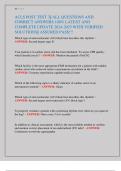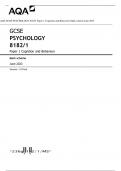Exam (elaborations)
ACLS POST TEST 3|| ALL QUESTIONS AND CORRECT ANSWERS 100% LATEST AND COMPLETE UPDATE WITH VERIFIED SOLUTIONS|| ASSURED PASS!!!
- Course
- Institution
ACLS POST TEST 3|| ALL QUESTIONS AND CORRECT ANSWERS 100% LATEST AND COMPLETE UPDATE WITH VERIFIED SOLUTIONS|| ASSURED PASS!!!
[Show more]




